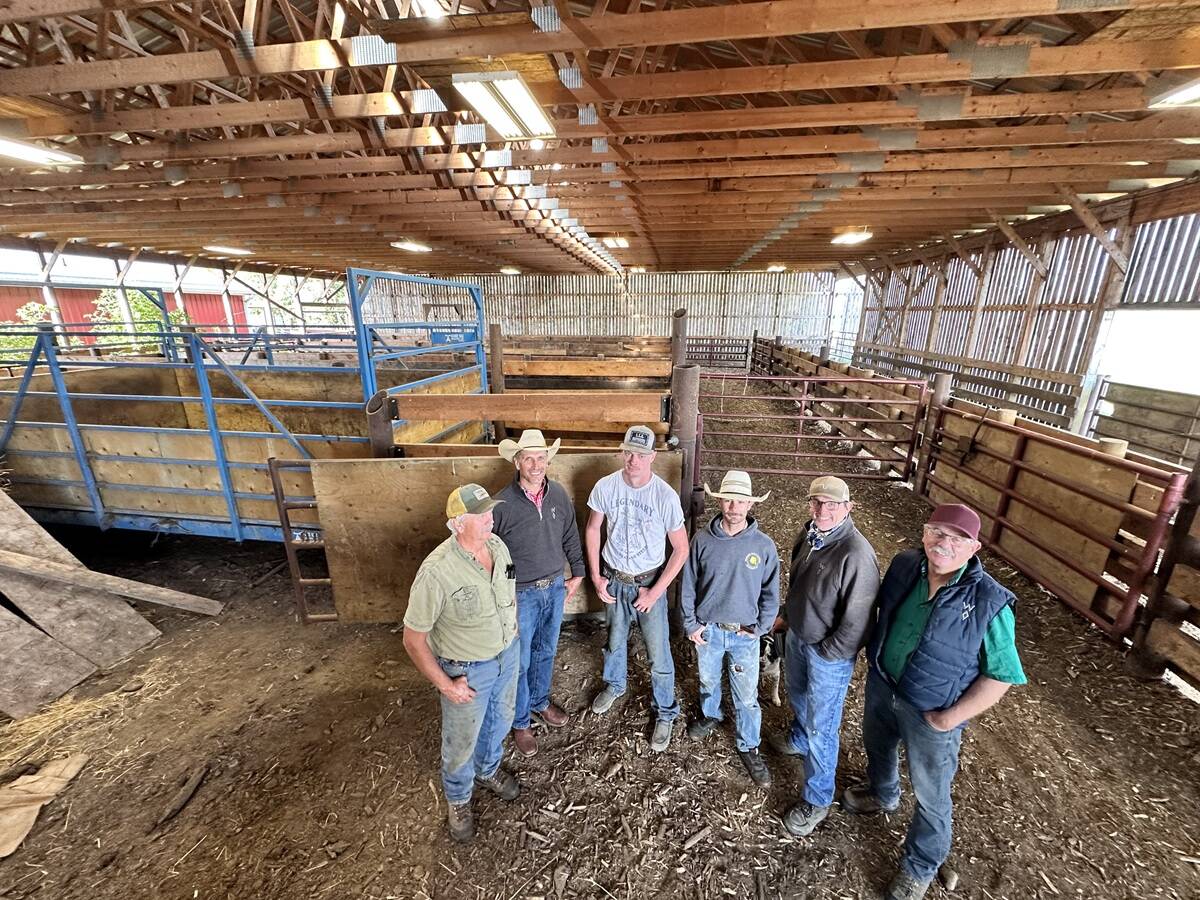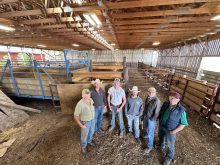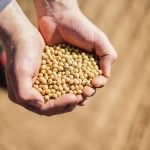Johne’s disease (JD) is a condition of ruminant animals that has warranted a brief mention in most practical animal health manuals
since it was first described in Germany by Heinrich Johne more than a century ago. Most beef producers skimmed right past it with the idea that it is more a disease of dairy cows than beef animals.
Not so, says Dr. Herman Barkema, a professor of epidemiology and head of the department of production animal health at the University of Calgary faculty of veterinary medicine (UCVM) and leader of the Alberta Inflammatory Bowel Disease Consortium with the faculty of medicine.
Read Also

Farm families work together to graze cropland with cattle in the fall
These Alberta farm families have separate operations, but work together to manage their land
The assumption has been made because the dairy industry worldwide was the first to recognize the production and economic losses associated with JD and has been at the forefront of JD research initiatives in recent years. Virtually all of the research since 1965 looking at the prevalence of JD, both at the herd level (number of herds affected within a region or country) and the cow level (number of affected animals within a herd) in many countries has been carried out with dairy herds. Control and prevention strategies have been developed and tested for the dairy industry as well.
Barkema and Dr. Shawn McKenna of the University of Prince Edward Island are co-chairs of the technical committee and sit on the advisory group to the Canadian Johne’s Disease Initiative (CJDI) — a nationwide effort to increase awareness of JD among dairy and beef producers. The CJDI was established in July, 2009 and is led by the Canadian Animal Health Coalition, Dairy Farmers of Canada and Canadian Cattlemen’s Association with support from veterinary colleges and government departments.
In addition to its communication role, the CJDI has been facilitating collaboration between provincial working groups and JD researchers as well as developing minimum standards for risk assessment and control programs. The ultimate outcome will be the delivery of cost-effective JD control and prevention programs for beef and dairy herds in Canada.
JD has recently been propelled onto the radar screen of beef producers because of the increasing focus on animal health issues as non-tariff trade barriers. “International animal health agencies are increasingly concerned about JD and some are, or are contemplating, banning importation of animals from exporting countries without JD control programs,” Barkema explains.
JD is a contagious disease of ruminants that some countries might view as a threat to their livestock industry, even though a review of JD prevalence studies to date, carried out by Barkema and colleagues, indicates that the bacteria that causes JD — Mycobacterium avium subspecies paratuberculosis, or MAP — is likely present in all countries of the world.
A second argument for banning imports is that a ruminant carrying a MAP infection could pose a threat to the human population. The symptoms of JD in cattle are similar to those of Crohn’s disease (CD) in humans, Barkema explains. Because MAP causes JD in ruminants, there has been speculation about a link between MAP and CD since the observation was first noted in 1913.
Researchers continue to explore the question of why patients with CD have a higher rate of MAP infections than people with other inflammatory bowel disorders and the general population. There is no conclusive evidence that MAP causes CD in humans, nor that people acquire MAP infections from consuming meat and dairy products. There is now a hypothetical theory that the bacteria may be transmitted to people via water.
The best way to deflect trade issues and alleviate consumer concerns is to develop control and prevention strategies.
ALBERTA JOHNE’S DISEASE INITIATIVE
Johne’s disease is a chronic inflammation of the gut and other organs of ruminant animals caused by a MAP infection. It is a progressive disease characterized by bouts of diarrhea and gradual loss of condition even though the animal appears to have a normal appetite.
It is believed that animals acquire the MAP infection when they are less than six months old by consuming MAP-laden manure from the dam’s legs and udder, contaminated bedding or MAP-contaminated colostrum and milk. Clinical signs don’t usually appear until the animal is three or four years old. Oftentimes, producers may not even suspect the disease is present because most infected cows never show symptoms of JD and the poor-doers and opens are typically culled from the herd.
Regardless of whether or not they show symptoms, infected animals can shed billions of MAP bacteria in their manure every day and in increasing amounts more frequently as the disease progresses. Infected cows are the primary and invisible source of infection for calves.
The concept that calves acquire the MAP infection prior to six months of age is based on one 1975 study involving nine animals, Barkema explains. To substantiate this con- cept, Dr. Jeroen De Buck, assistant professor of bacteriology at UCVM is the lead investigator of a three-year study that hopes to pinpoint the age at which calves are most likely to acquire MAP, determine whether the amount of MAP consumed has a bearing on whether or not the calf develops JD, investigate where the bacteria go in the body, and identify other factors that may be involved in the onset of JD.
The research is being carried out in conjunction with the new Alberta Johne’s Disease Initiative (AJDI), led by Alberta Milk and co-ordinated by the UCVM. It is presently advancing through the planning phase, with the first herds to be enrolled this October. The goal is to have 50 per cent of the herds participating by the end of 2011. The program will also be open to Alberta beef producers.
The first level of participation in the AJDI involves consulting with a AJDIcertified veterinarian to conduct a risk assessment. The veterinarian and producer work together to develop a management plan specifically for the farm that incorporates one or two changes that the owner is able and committed to make within the year.
Producers who want to go beyond implementing beneficial management practices are eligible to participate in the JD Herd Status program, which involves testing individual animals.
The work to develop affordable, effective and easy sampling strategies for JD control programs will continue in connection with the AJDI. Barkema and De Buck will be analysing methods of identifying various strains of the bacteria and studying patterns of transmission between and within Canadian herds.
DIAGNOSTIC CHALLENGES
There are a number of diagnostic tests available to detect infected animals, including serology on blood and milk, culture of feces and tissues, and new tests to detect MAP-specific genetic material. Unfortunately, these tests only detect MAP-infected cattle in specific stages of infection and the test results are often difficult to interpret, Barkema explains.
Two recent developments in testing and sampling methods are supporting JD control and prevention initiatives by reducing the cost and time involved in culturing samples to detect MAP. A new culture system, validated in Canada by Barkema’s lab and now installed at UCVM, can culture 256 samples at a time in six to eight weeks, versus the conventional methods that required 16 to 26 weeks. Culturing pooled fecal samples from individual animals or pooling six samples of manure from the environment has been proven to be a cost-effective alternative to culturing fecal samples from individual animals to detect MAP at the herd level.
Quebec implemented a JD control program for dairy and beef producers in 2007; the Dairy Farmers of Ontario followed suit in 2009, and milk producers in Atlantic Canada implemented their program this June. All have adopted the national standards developed by the CJDI. There are now active JD working groups in almost every province.
PREVENTION AND CONTROL
Antimicrobials have little to no effect on MAP because the bacteria are inside the tissue cells, Barkema says. Only massive doses given over an extended period of time would have a chance at reaching MAP.
Although MAP vaccines have been developed, none are licensed for use in domestic animals in Canada because of the difficulty differentiating antibodies in MAP-vaccinated cattle from those exposed to avian tuberculosis or bovine tuberculosis, which is a controlled disease in Canada.
Barkema says vaccines help to reduce the number of animals showing clinical signs of JD and may reduce shedding of MAP, but they don’t prevent new infections.
The four cornerstones of a JD control and prevention program on the farm are:
1. Be aware of the disease status of herds from which you purchase animals and don’t forget that bulls can be a source of disease as well. The main route of introducing JD into a herd is purchasing infected animals.
2. Cull animals with chronic diarrhea.
3. Group heifers separately from mature cows so the calves of heifers won’t be infected by manure from older cows.
4. Hygiene. Provide a clean, dry calving area with fresh straw.
———
HOW WIDESPREAD IS JOHNE’S?
In 2009, Herman Barkema and his colleagues completed a review of published literature related to the prevalence of JD worldwide. The percentage of cattle affected globally was difficult to decipher due to the various testing and sampling procedures, sensitivities of the testing methods and differences in standards for what constitutes a positive case. They concluded that designing studies with standard testing and protocols would greatly benefit global control and prevention strategies.
In Canada, a recent test carried out by Shawn McKenna using cultured samples from dairy cows at an abattoir in New Brunswick suggested that 16 per cent of dairy cows in Atlantic Canada are affected with MAP. In 2006, Morgan Scott’s study concluded that the prevalence of MAP in Alberta dairy cows was 17.5 per cent. The infection rate is likely to be very similar in the other Canadian provinces.
Various studies, including those conducted in Canada by Scott in 2007 and Cheryl Waldner in 2002, estimated that the prevalence of antibodies to MAP in beef cows in Canada is less than one per cent and less than 10 per cent of herds have infected animals. The prevalence is thought to be one to two per cent of beef animals in Alberta. It is acknowledged that the prevalence of infected cows is bound to be significantly higher than reported because it has since been determined that the ELISA blood test method used for those types of studies detects a lower percentage of infected cattle than initially estimated.
When MAP is present on a beef farm, the within-herd prevalence can become quite high in comparison to dairy production, largely because beef cows and calves are commingled from birth until weaning, allowing ample opportunity for transmission. That said, Barkema feels that the beef industry is in a unique situation to control this disease before it becomes as prevalent as in the dairy industry.
















